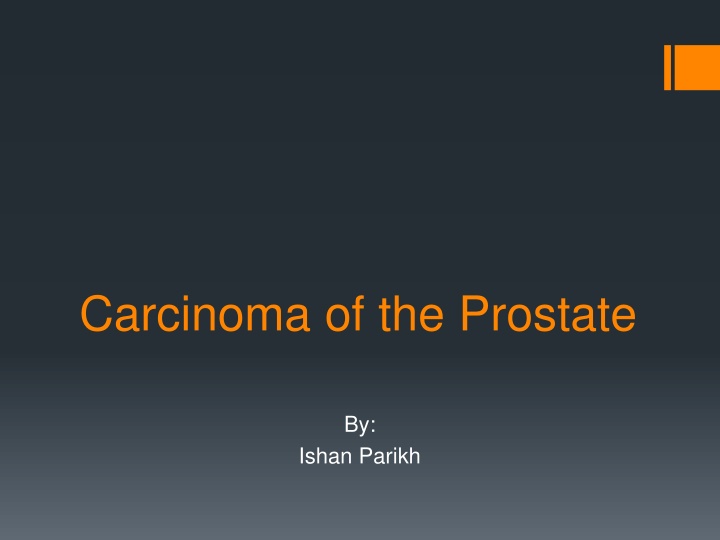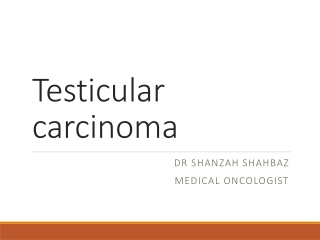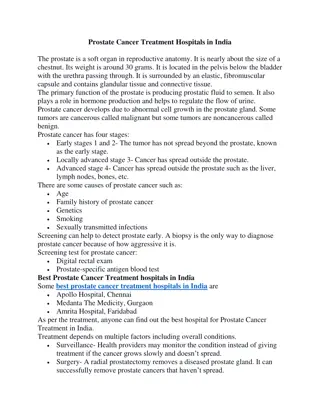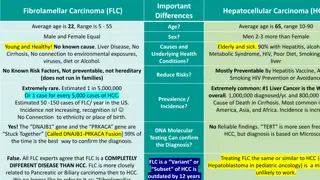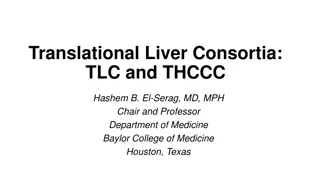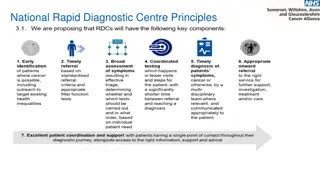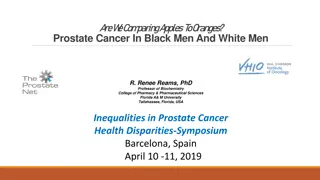Prostate Carcinoma: Causes and Detection
Prostate carcinoma, a common cancer in males, originates in the prostate gland. Learn about its detection methods, grades, and impact on men's health.
Uploaded on Feb 21, 2025 | 2 Views
Download Presentation

Please find below an Image/Link to download the presentation.
The content on the website is provided AS IS for your information and personal use only. It may not be sold, licensed, or shared on other websites without obtaining consent from the author.If you encounter any issues during the download, it is possible that the publisher has removed the file from their server.
You are allowed to download the files provided on this website for personal or commercial use, subject to the condition that they are used lawfully. All files are the property of their respective owners.
The content on the website is provided AS IS for your information and personal use only. It may not be sold, licensed, or shared on other websites without obtaining consent from the author.
E N D
Presentation Transcript
Carcinoma of the Prostate By: Ishan Parikh
Background on Cancer Oldest information dates back to 3000 BC, Egyptian textbook on trauma surgery There is no treatment. Hippocrates Father of Medicine first used the term carcinos or carcinoma to describe non-ulcer forming tumor The Greeks started referring to it as a crab because of it s finger-like projections. Latin term for crab Cancer Source: American Cancer Society
What is Cancer? Cells growing uncontrollably and having the potential to spread When those abnormal cells become a mass, it becomes a tumor Benign (noncancerous) tumors may interfere with body functions, such as urinating, but are not considered life threatening Malignant tumors will invade surrounding tissues and destroy them Prostate cancer is a malignant tumor that begins growing in the prostate gland Metastasis is when the cells break away and spread to others parts of the body Source: Marieb E. The reproductive system. Human Anatomy & Physiology. 4th ed. ; Pharmacotherapy: A Pathophysiologic Approach. 3rd ed.
Prostate Carcinoma Prostate gland produces fluid for semen Most common cancer and 6th leading cause of death in males Source: Marieb E. The reproductive system. Human Anatomy & Physiology. 4th ed. ; Pharmacotherapy: A Pathophysiologic Approach. 3rd ed.
Prostate Carcinoma Detection Common methods to asses state of prostate include A digital rectal exam (DRE) A PSA blood test prostate-specific antigen A biopsy of tissue Higher risk in men aged 50 or older, with 70% of cases coming from those aged 65 or older All stages have an overall survival rate of 97% Source: American Cancer Society
Grades of Prostate Cancer Grades are how differentiated a single cell is from the normal Gleason grade of 1 indicates the cancer cells resemble regular evenly spaced prostate tissue Gleason grade 5 indicates tissue completely composed of tumor cells If tumor has areas of different grades, the grades will add together to obtain a score from 2-10 Source: Campbell s Urology
Stages of Prostate Cancer Staging is an assessment of the size and location of tumor. Important factor in determining treatment Stage A (T1) early cancer, tumor in prostate gland but can t be detected by rectal exam Stage B (T2) Tumor confined to prostate but detected by rectal exam Stage C (T3-T4) Tumor has spread to surrounding areas Stage D (N, M) Cancer has spread to nearby and distant organs Source: American Cancer Society
Treatments Radical prostatectomy - Surgical removal before the cancer spreads Cryosurgery - Liquid nitrogen put at the source of cancer cells to freeze and kill Radiation radioactive seeds implanted near cancer Hormonal therapy suppress testosterone to slow growth Chemotherapy targets cancer but also kills normal cells Watchful waiting usually for old age or slow growth Source: American Cancer Society
